Large E-Learning Platform
Redesign Fast, Ship Faster: SeaLab's Year
with a large e-learning platform
By the end of our engagement with the e-learning platform, the live digital product was
stronger, smarter, and more scalable. Learners benefited, too: according
to research data and feedback, graduates of the e-learning programs saw an average salary
increase of $8,500. That’s the kind of outcome we love to design for.
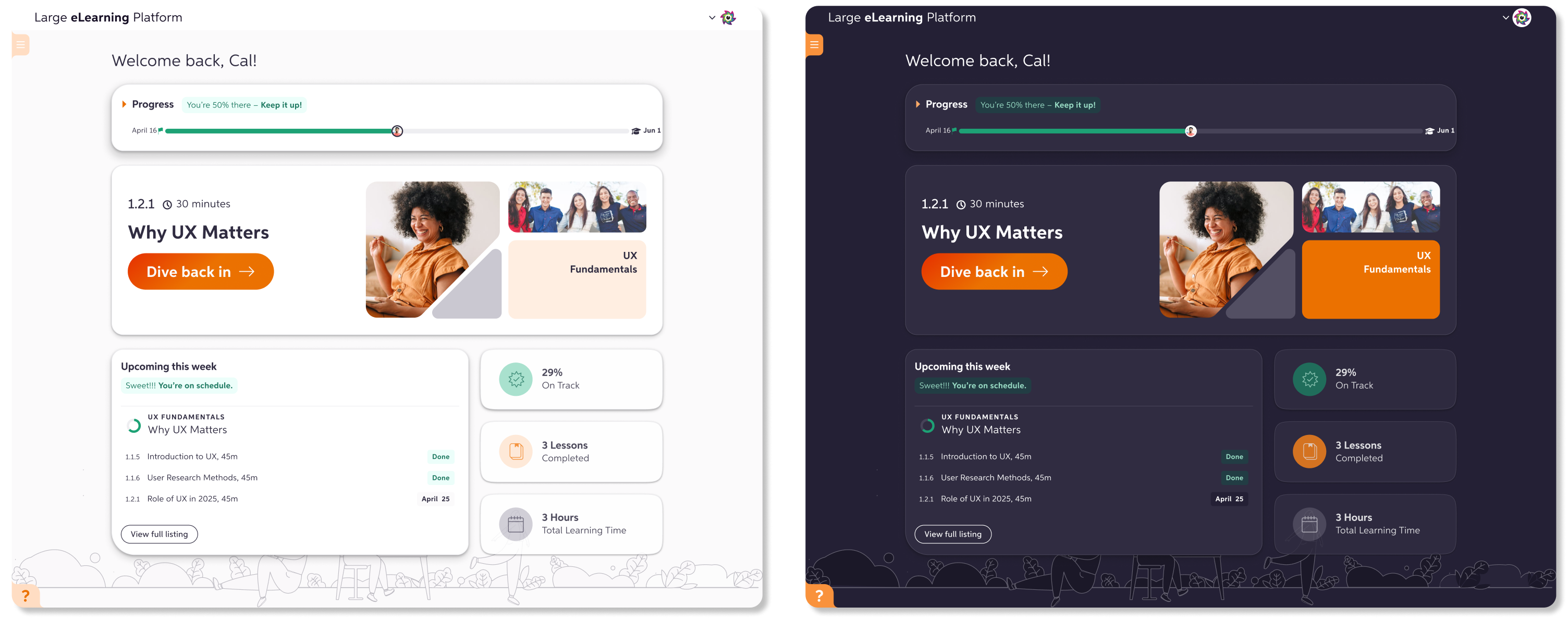
Problem 1
How to explore, test, and deliver results quickly amidst rapidly
changing roadmaps and business model updates.
Problem 2
How to manage, create, and update design system guidelines for
a large e-learning platform while delivering products in a small,
three-person design team.
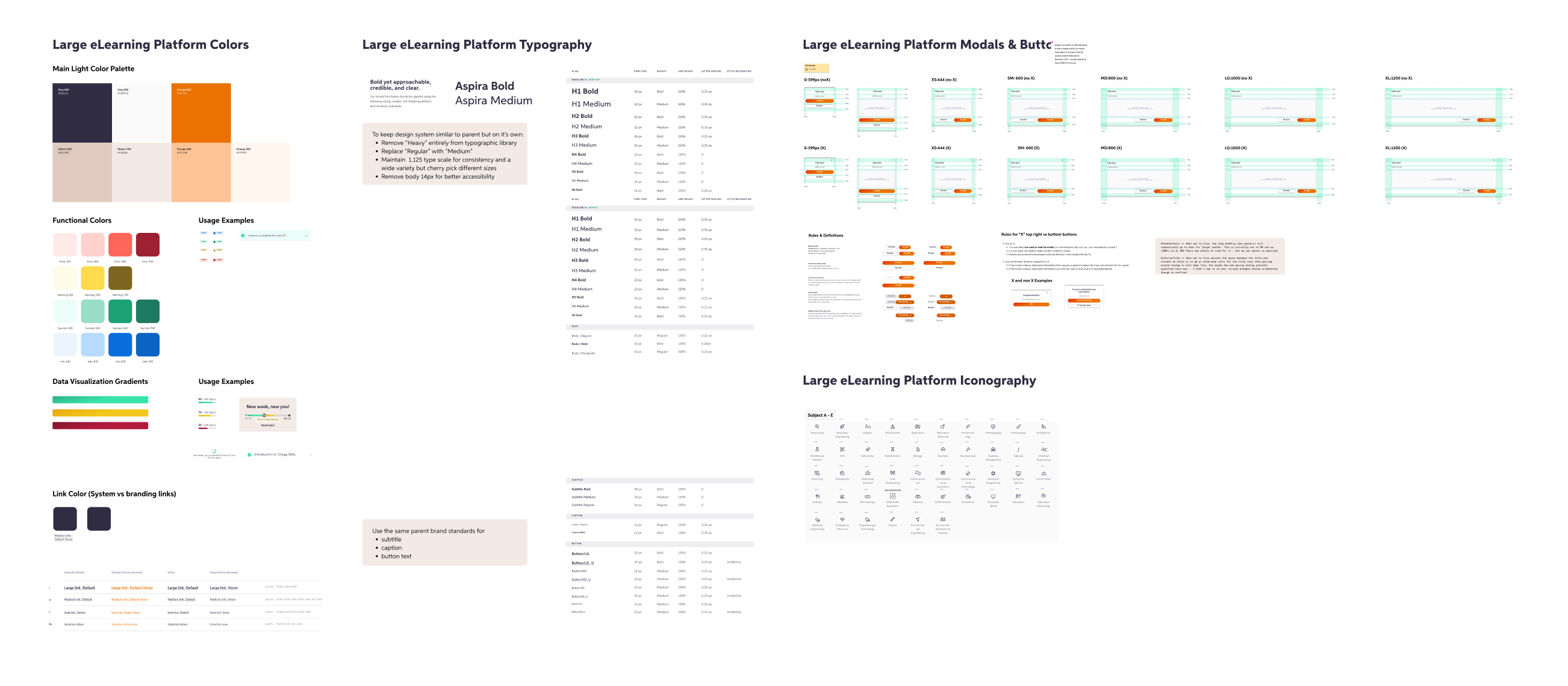
Using UserTesting.com with tailored user segments gave us rapid
feedback on everything from color palettes to interaction patterns. A
standout insight? While the learning platform's signature orange and caramel palette
was familiar, users overwhelmingly preferred a light gray interface -
calling it more modern, clean, and easier to read - a great reminder
to never assume.
Leveraging agile user testing platforms
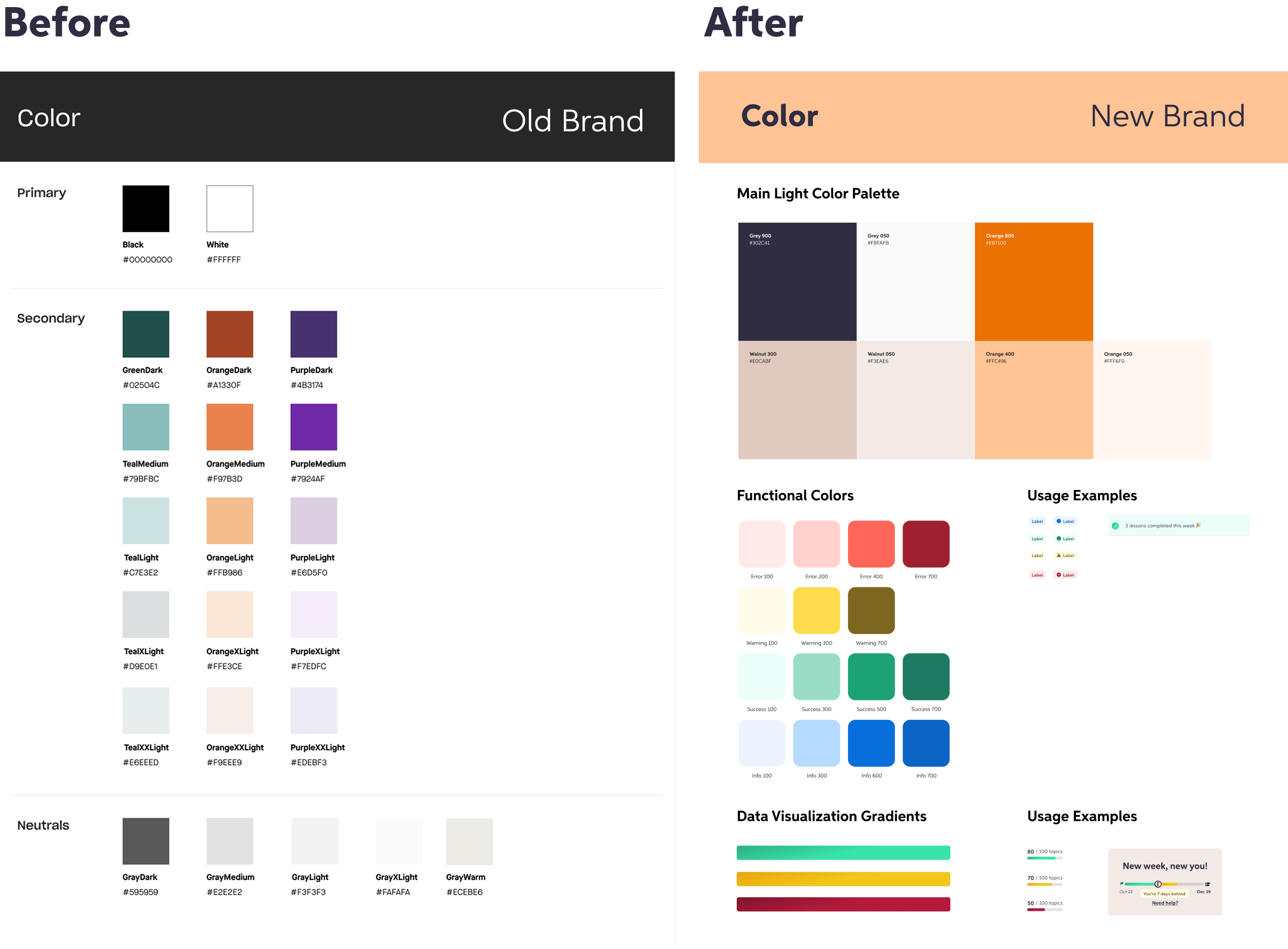
Time-boxed collaborative design sprints
We ran structured design sprints within our team to quickly generate
and evaluate ideas. That focused energy helped us move from
exploration to execution in record time - especially during the Q2
lesson redesign crunch.
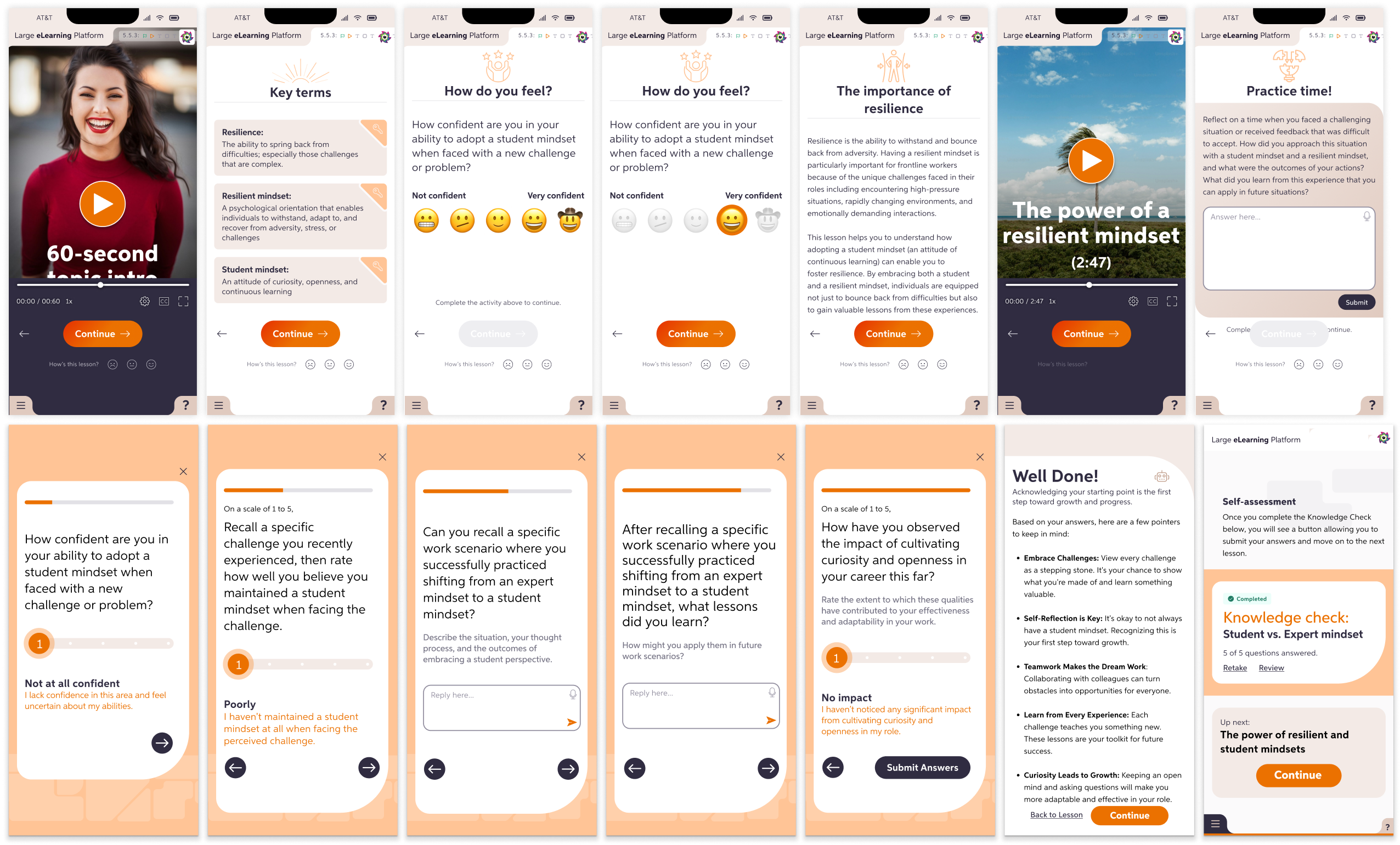
The design system grew iteratively, always grounded in real product
needs. We used Figma variables to implement light/dark themes and
documented patterns as we built them - so nothing got lost and
everything stayed usable. We also supported the e-learning platform's design
team by walking through best practices and teaching how to apply
system thinking to new work.
Incremental design system development
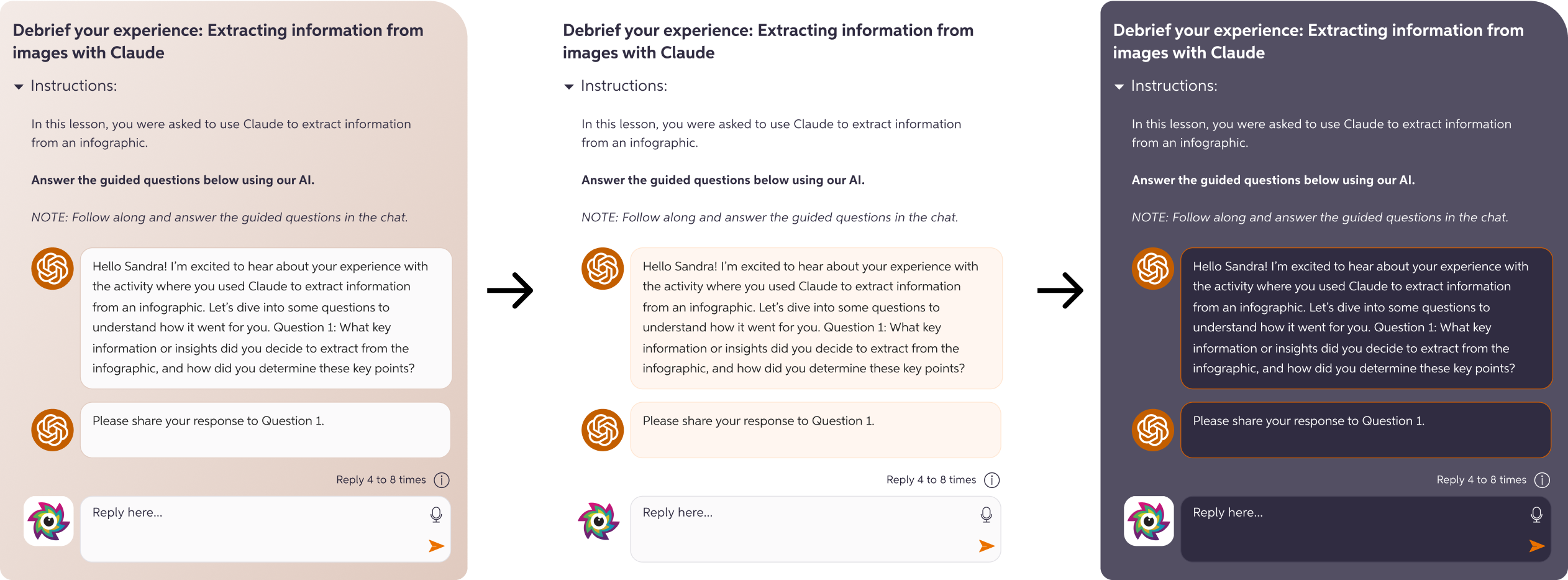
AI-driven design with user trust at the center
Initially, the learning platform used AI mainly to answer questions. But the
roadmap shifted, and we explored ways to build AI into lesson grading
and mentorship. What we learned: users don't trust AI fully with
grading or mentorship. So we pivoted - designing features that used AI
for skill reinforcement, memory refreshers, and self-testing instead.
The result? A more engaging, trustworthy learning experience.
“Graduates of the large e-learning platform programs saw an average salary increase of $8,500”
Most importantly, the work made an impact where it mattered most: with learners. According to the e-learning platform, graduates saw an average salary increase of $8,500 - clear evidence that thoughtful design can create real, measurable outcomes.
And maybe the most rewarding part? This wasn't design that sat in a Figma file. It shipped. It shaped how people learn, how teams collaborate, and how the product continues to evolve today.
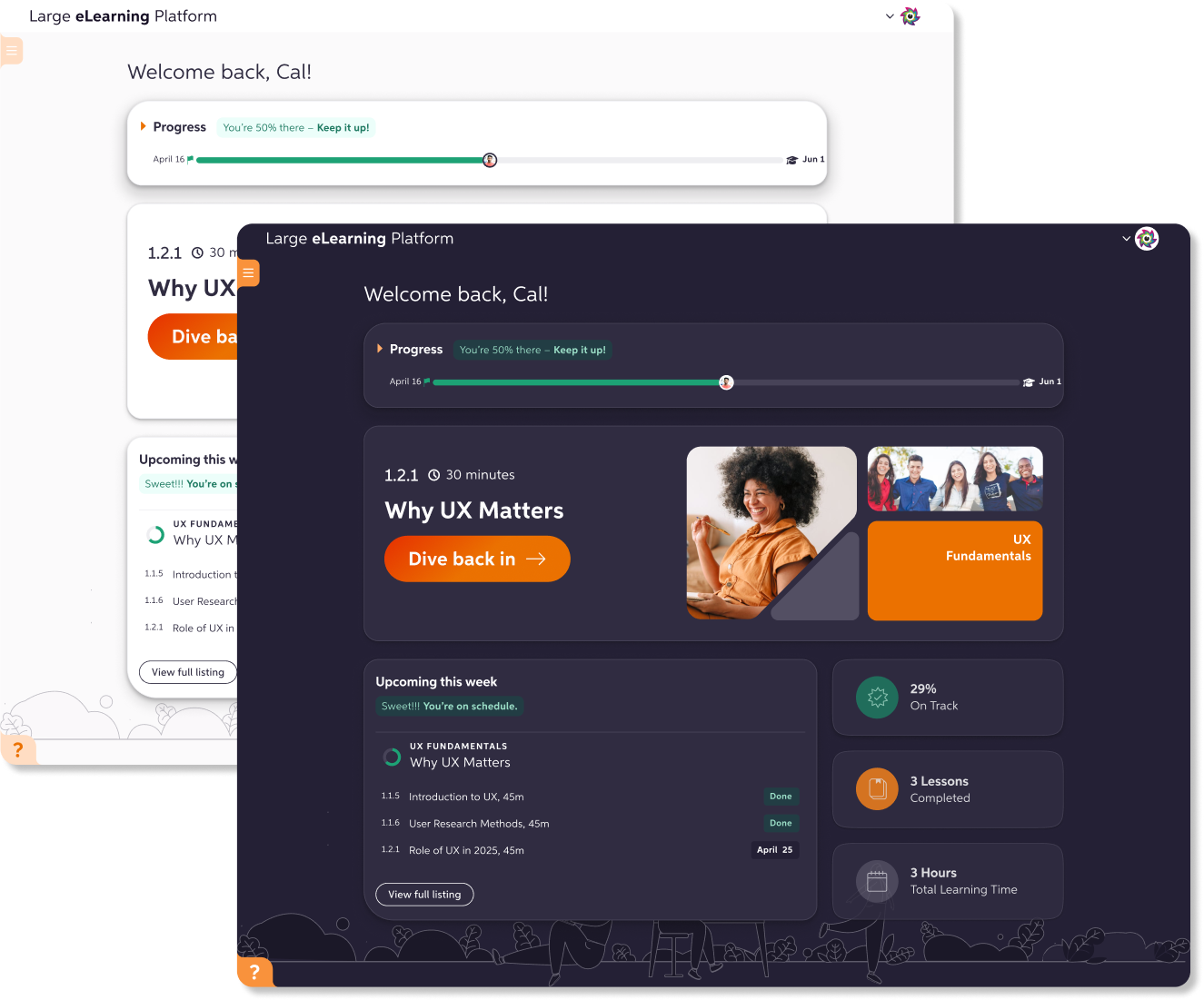
“Collaborating with [SeaLab] has been invaluable… not only filling in gaps, but helping shape the broader design ethos with best practices and high-quality output. [SeaLab is] first on my list if we need help again.”

Anthony R.
Principal Product Designer,eLearning Platform